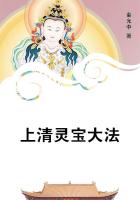In fact,everywhere that Shakespeare turned in London,he saw theapparel and appurtenances of past ages,and it is impossible todoubt that he made use of his opportunities.The employment oflance and shield,for instance,in actual warfare,which is sofrequent in his plays,is drawn from archaeology,and not from themilitary accoutrements of his day;and his general use of armour inbattle was not a characteristic of his age,a time when it wasrapidly disappearing before firearms.Again,the crest onWarwick's helmet,of which such a point is made in HENRY THE SIXTH,is absolutely correct in a fifteenth-century play when crests weregenerally worn,but would not have been so in a play ofShakespeare's own time,when feathers and plumes had taken theirplace -a fashion which,as he tells us in HENRY THE EIGHTH,wasborrowed from France.For the historical plays,then,we may besure that archaeology was employed,and as for the others I feelcertain that it was the case also.The appearance of Jupiter onhis eagle,thunderbolt in hand,of Juno with her peacocks,and ofIris with her many-coloured bow;the Amazon masque and the masqueof the Five Worthies,may all be regarded as archaeological;andthe vision which Posthumus sees in prison of Sicilius Leonatus -'an old man,attired like a warrior,leading an ancient matron'-is clearly so.Of the 'Athenian dress'by which Lysander isdistinguished from Oberon I have already spoken;but one of themost marked instances is in the case of the dress of Coriolanus,for which Shakespeare goes directly to Plutarch.That historian,in his Life of the great Roman,tells us of the oak-wreath withwhich Caius Marcius was crowned,and of the curious kind of dressin which,according to ancient fashion,he had to canvass hiselectors;and on both of these points he enters into longdisquisitions,investigating the origin and meaning of the oldcustoms.Shakespeare,in the spirit of the true artist,acceptsthe facts of the antiquarian and converts them into dramatic andpicturesque effects:indeed the gown of humility,the 'woolvishgown,'as Shakespeare calls it,is the central note of the play.
There are other cases I might quote,but this one is quitesufficient for my purpose;and it is evident from it at any ratethat,in mounting a play in the accurate costume of the time,according to the best authorities,we are carrying outShakespeare's own wishes and method.
Even if it were not so,there is no more reason that we shouldcontinue any imperfections which may be supposed to havecharacterised Shakespeare's stage mounting than that we should haveJuliet played by a young man,or give up the advantage ofchangeable scenery.A great work of dramatic art should not merelybe made expressive of modern passion by means of the actor,butshould be presented to us in the form most suitable to the modernspirit.Racine produced his Roman plays in Louis Quatorze dress ona stage crowded with spectators;but we require differentconditions for the enjoyment of his art.Perfect accuracy ofdetail,for the sake of perfect illusion,is necessary for us.
What we have to see is that the details are not allowed to usurpthe principal place.They must be subordinate always to thegeneral motive of the play.But subordination in art does not meandisregard of truth;it means conversion of fact into effect,andassigning to each detail its proper relative value'Les petits details d'histoire et de vie domestique (says Hugo)doivent etre scrupuleusement etudies et reproduits par le poete,mais uniquement comme des moyens d'accroitre la realite del'ensemble,et de faire penetrer jusque dans les coins les plusobscurs de l'oeuvre cette vie generale et puissante au milieu delaquelle les personnages sont plus vrais,et les catastrophes,parconsequeut,plus poignantes.Tout doit etre subordonne e ce but.
L'Homme sur le premier plan,le reste au fond.'
This passage is interesting as coming from the first great Frenchdramatist who employed archaeology on the stage,and whose plays,though absolutely correct in detail,are known to all for theirpassion,not for their pedantry -for their life,not for theirlearning.It is true that he has made certain concessions in thecase of the employment of curious or strange expressions.Ruy Blastalks of M,de Priego as 'sujet du roi'instead of 'noble du roi,'and Angelo Malipieri speaks of 'la croix rouge'instead of 'lacroix de gueules.'But they are concessions made to the public,orrather to a section of it.'J'en offre ici toute mes excuses auxspectateurs intelligents,'he says in a note to one of the plays;'esperons qu'un jour un seigneur venitien pourra dire toutbonnement sans peril son blason sur le theatre.C'est un progresqui viendra.'And,though the description of the crest is notcouched in accurate language,still the crest itself was accuratelyright.It may,of course,be said that the public do not noticethese things;upon the other hand,it should be remembered that Arthas no other aim but her own perfection,and proceeds simply by herown laws,and that the play which Hamlet describes as being caviareto the general is a play he highly praises.Besides,in England,at any rate,the public have undergone a transformation;there isfar more appreciation of beauty now than there was a few years ago;and though they may not be familiar with the authorities andarchaeological data for what is shown to them,still they enjoywhatever loveliness they look at.And this is the important thing.











